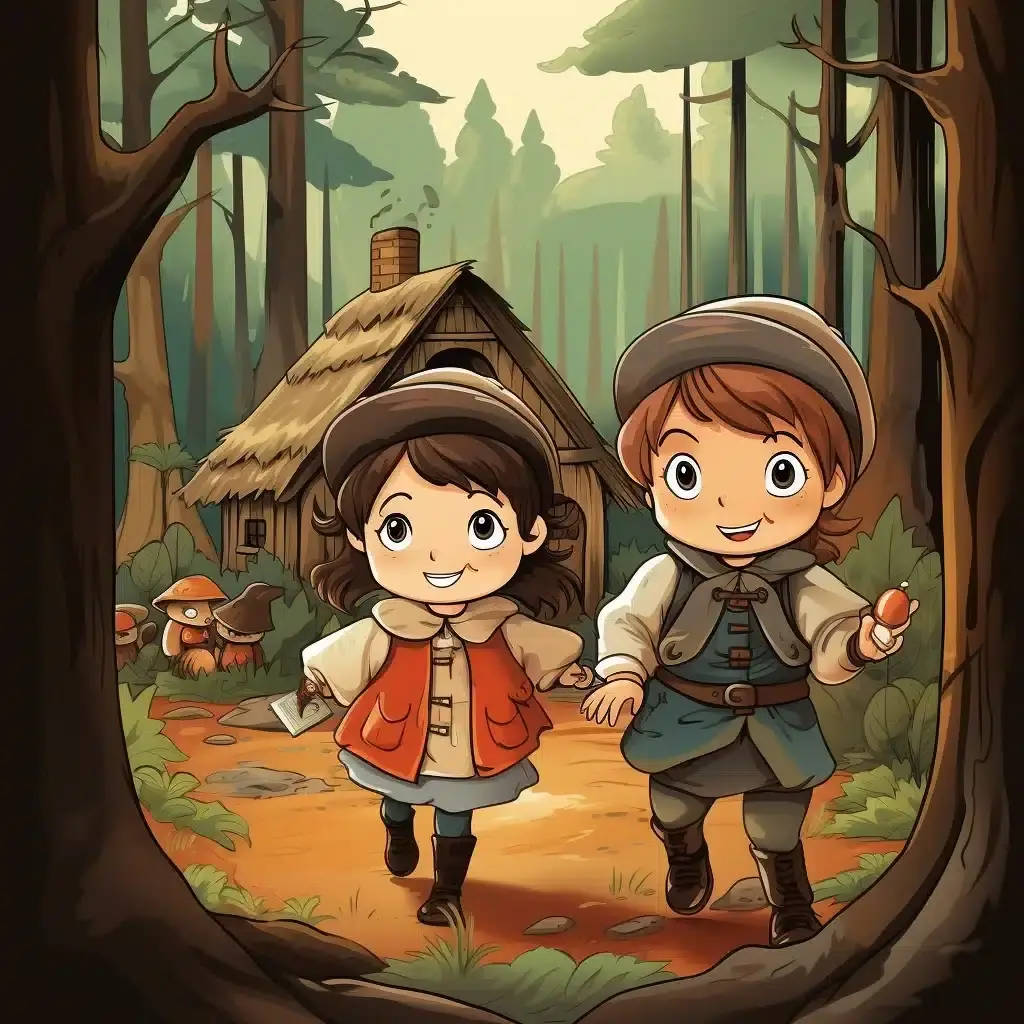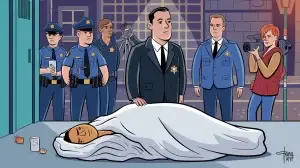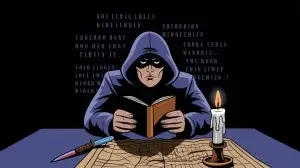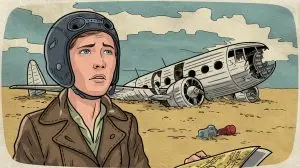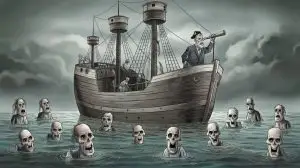Grimm Brothers’ Hansel and Gretel Adaptation: The tale of Hansel and Gretel, as recorded by the Brothers Grimm, is a narrative steeped in dark themes and cautionary undertones. It tells the story of two siblings who, after being abandoned in the forest by their struggling parents, encounter a witch with a cannibalistic appetite. This story has been subject to numerous adaptations in various mediums over the centuries, with each version adding its own unique twist to the haunting plot.

A significant factor in the longevity and popularity of Hansel and Gretel is its ability to be reinterpreted across cultural and historical contexts. While the core elements of the narrative remain intact—the breadcrumb trail, the gingerbread house, the clever children outwitting the witch—the adaptations often reflect contemporary societal concerns or artistic trends. As a result, these retellings provide fertile ground for analysis, revealing much about the era and culture from which they emerge.
The impact of the Brothers Grimm’s Hansel and Gretel is undeniable in the realm of fairy tales and folklore. Each adaptation serves not only as entertainment but also as a vessel for moral lessons and societal commentary. The story’s versatility and the Grimm brothers’ masterful storytelling have cemented its place as a classic, continuously inviting audiences to explore its depths. Whether through film, literature, or stage, Hansel and Gretel continues to captivate, proving the enduring power of a well-told fairy tale.
Origins of the Tale
The origins of Hansel and Gretel are deeply rooted in the traditions and hardships of early 19th-century Germany.
The Brothers Grimm and Their Legacy
Jacob and Wilhelm Grimm, known as the Brothers Grimm, were not just collectors of fairy tales, but pivotal figures in preserving German folklore. Their most notable contributions include the compilation of tales that have become central to Western fairy tale canon. The story of Hansel and Gretel first appeared in their collection titled “Children’s and Household Tales” in 1812. The Grimm brothers contributed significantly to the field of folklore studies by exploring the dark and often complex themes within these stories.
Cultural Impact of Hansel and Gretel
Hansel and Gretel has had a lasting cultural impact, evolving from its grim origins into a staple of children’s literature. Despite its dark themes of famine and abandonment, the tale embodies resilience and ingenuity in the face of hardship. With Christian overtones and themes of survival, the story has transcended its initial audience to become a beloved classic worldwide. The legacy of Hansel and Gretel is a testament to the Brothers Grimm’s lasting influence on the cultural conception of fairy tales.
Plot and Characters
In dissecting the cherished tale “Hansel and Gretel” by the Brothers Grimm, one will encounter profound character dynamics and an intricate storyline steeped in symbolic motifs.
Character Analysis
Hansel and Gretel are the central protagonists, portraying resilience and cunning. They are siblings with a close bond, navigating perils together. Their father, a woodcutter, is depicted as caring but feeble against the will of their stepmother. The stepmother orchestrates the children’s abandonment to lessen the family’s economic burden. The witch is the quintessential antagonist, inhabiting a gingerbread house in the forest and embodying malevolence.
Overview of the Storyline
Hansel and Gretel are left in the forest by their stepmother, with Hansel cleverly using white pebbles to guide them home. Upon their second abandonment, bread crumbs are used, but they are unwittingly consumed by birds. The children stumble upon a gingerbread house and encounter an evil witch, who intends to eat them. Resourcefulness leads the siblings to outwit her, highlighting their heroic qualities.
Symbolism and Themes
The forest symbolizes the unknown, hosting trials that test the siblings, whereas the bread crumbs and white pebbles signify fleeting security and the hope of return, respectively. The gingerbread house is a trope for enticement, drawing innocents into danger. Themes interwoven include the dichotomy of good versus evil, the children’s coming of age, and the critique of parental neglect.
Adaptations Over Time

The tale of Hansel and Gretel has undergone extensive transformation from its origins to modern-day retellings.
From Oral Tradition to Written Form
The journey of Hansel and Gretel began as a tale passed by word of mouth before settling into the written anthology by the Grimm Brothers. This transition allowed the story to gain a standardized form, preserving its core elements for future adaptations.
Film and Television Interpretations
In the sphere of film and television, Hansel and Gretel have been reimagined numerous times. The 2013 action horror film, Hansel and Gretel: Witch Hunters, directed by Tommy Wirkola, presents a fresh, dark take on the fairytale. Another notable film is Oz Perkins’ interpretation, featuring Sophia Lillis and Alice Krige, which adds a horror film element to the familiar story.
Stage and Opera Adaptations
On stage, operatic renditions of Hansel and Gretel add a musical dimension to the storytelling. These adaptations often highlight the dramatic potential of the narrative and have been a staple in opera houses worldwide, exploring deeper themes present in the tale.
Critical Reception and Analysis

The Grimm Brothers’ tale of “Hansel and Gretel” has seen various adaptations, receiving diverse responses from critics and audiences alike.
Literary Reviews
Hansel and Gretel has consistently garnered attention for its dark themes and compelling narrative. Literary critics often highlight the tale’s climax, where the children outwit the witch, as a gripping turn of events. The chilling atmosphere and sense of horror prevalent in the story have also been noted, with the narrative’s darker elements analyzed in terms of their impact on the fairy tale genre.
Adaptation Reception
Adaptations of Hansel and Gretel, especially those for the big screen, have been met with a mix of reviews. Hollywood’s renditions, featuring the tale in various horror and fantasy films, have been critiqued for their interpretation of the narrative’s ending. Some adaptations have been praised for staying true to the original’s harrowing mood, while others have been critiqued for deviating from the source material.
Modern Interpretations and Critique
In recent years, Hansel and Gretel has faced modern analyses and interpretations. Critics examine the socio-economic themes within the story, particularly focusing on issues of child abandonment and survival. The story’s resilience and relevance in contemporary culture have been attributed to its universal themes and the timeless struggle between vulnerability and cunning, often resonating with modern audiences.
Themes and Symbolism

Hansel and Gretel, by the Brothers Grimm, harbors deep themes and symbols that resonate with core human experiences.
The Role of Food
Food in Hansel and Gretel is a potent symbol. It represents survival amidst famine and hunger. The children use bread crumbs to mark their path, showing an attempt at maintaining a lifeline. This act turns desperate as birds eat the breadcrumbs, signifying the fragility of hope in the face of starvation. Moreover, the witch’s house, made of cake and confectionery, entices the starving children, but this seemingly plentiful food source is a deceptive trap.
Family Dynamics and Abandonment
Family dynamics are central to the tale, with a particular focus on child abandonment. The family’s destitution leads to the daunting decision to leave the children in the forest, highlighting the grim reality many faced during famine. This abandonment by their parents thrusts Hansel and Gretel into a cruel world alone, intensifying the theme of survival. The witch, acting as a perverse mother figure, further twists the notion of family, as she feigns care to mask her sinister intentions.
Hansel and Gretel in Popular Culture

The tale of Hansel and Gretel has transcended its origins, influencing diverse forms of modern media and the arts.
Influence on Modern Media
Stories of children in peril, like Hansel and Gretel, echo through contemporary storytelling, marking their influence on modern media. It has inspired numerous films, television shows, and other narrative forms, where the story’s core themes resonate with new generations. Visually, the iconic imagery of the candy-coated house often reappears in media as a symbol of temptation and trickery.
Legacy in Literature and Arts
In literature, Hansel and Gretel has inspired a plethora of adaptations, analysis, and reinterpretations, building on the legacy of the Brothers Grimm. The fairytale has been frequently explored alongside other Grimm tales such as Cinderella and Snow White, in discussions about the role of adversity and triumph in shaping young protagonists. The tale’s breadcrumbs and precious stones motif finds echoes in various literary forms across the centuries, symbolizing loss, hope, and resilience. In the arts, particularly in children’s illustrations and modern installations, Hansel and Gretel has been a rich source of creative visual storytelling, imbued with a timeless quality that speaks to both the innocence and darkness found within fairy tales.
Production and Release Details of Prominent Adaptations
Recent years have witnessed a resurgence of interest in the classic fairy tale “Hansel and Gretel”, with Hollywood taking the lead in reimagining the story for a modern audience.
Hollywood’s Interpretation
In 2013, the story of Hansel and Gretel took a dark twist with the release of “Hansel & Gretel: Witch Hunters”, directed by Tommy Wirkola. It transported the eponymous siblings to an adult world where they became bounty hunters targeting witches. Released on the big screen, this melding of fantasy and action boasted a 3D experience, making it stand out among that year’s cinema offerings. The film stars Jeremy Renner and Gemma Arterton as the grown-up Hansel and Gretel, highlighting Hollywood’s trend of reimagining classic tales with a fresh perspective.
Another Hollywood adaptation came from director Oz Perkins with “Gretel & Hansel”, starring Sophia Lillis and Alice Krige. Released in early 2020, this film offered a visually striking experience leaning into atmospheric horror and suspense, earning attention for its stylistic approach to the narrative. Set in distant, dream-like landscapes, it presents a tale steeped in dark fantasy.
Notable Directors and Actors
Tommy Wirkola, a Norwegian director known for his unique approach to genre films, brought a distinctive twist to the fairy tale with a blend of horror and humor in “Hansel & Gretel: Witch Hunters”. Meanwhile, Oz Perkins, known for his atmospheric and psychological horror films, opted for a more ominous tone in “Gretel & Hansel”. Sophia Lillis, famed for her role in “It”, played the lead role of Gretel with mesmerizing presence, while seasoned actress Alice Krige portrayed the sinister witch, bringing gravity and depth to the character. Both films showcase the talents of their respective casts, underlining the importance of exceptional acting in bringing new dimensions to well-known stories.
Steve is the creative force behind Unique Tales, a blog dedicated to sharing captivating stories that explore the human experience in all its complexity. With a passion for writing and a talent for crafting engaging narratives, Steve's blog is a treasure trove of imaginative tales that transport readers to other worlds and challenge them to see things from new perspectives. From epic adventures to intimate character studies, Steve's stories are always thought-provoking and emotionally resonant. With a growing following of readers who appreciate his unique voice and creative vision, Steve is quickly becoming a rising star in the world of online storytelling.

